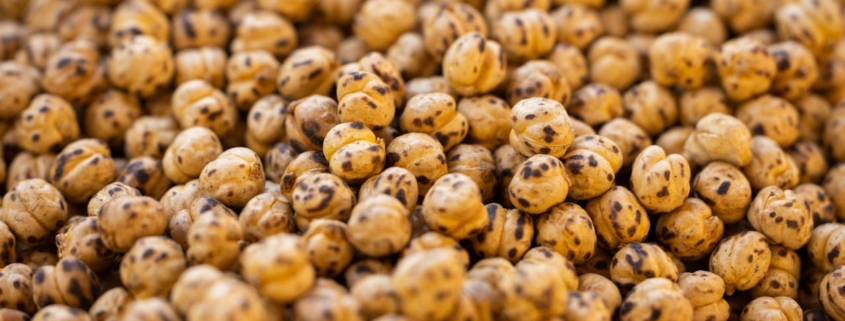Chickpeas have been a staple in diets worldwide, offering not just great taste, but also impressive nutritional value. Known for their high protein content and rich nutrient profile, they support heart health and aid in digestion. However, when it comes to agriculture, chickpeas offer even more benefits. Farmers appreciate their ability to thrive in different climates, especially in regions like Australia, where they adapt well. Planting chickpeas not only enriches the soil due to their nitrogen-fixing ability but also diversifies crops, bringing multiple advantages to those working the land.
This article sets its sights on comparing chickpea seeds with other legume varieties. By understanding how chickpeas measure up, growers can make well-informed decisions tailored to their specific farming needs. Exploring differences in growth conditions, yield, and nutritional value will shed light on the unique qualities that make chickpeas a preferred choice for many farmers.
Characteristics Of Chickpea Seeds
Chickpea seeds present a unique blend of features that make them desirable in agriculture. Typically, they have a rounded shape with a slightly thicker edge. Colours can vary from creamy beige to darker shades like black, depending on the variety. These seeds thrive in well-drained soil with moderate moisture levels, making them suitable for Australia’s diverse range of growing areas. They prefer cool, dry environments, which help optimise germination rates and encourage robust plant development.
The nutritional benefits of chickpeas are significant and multifaceted. They are packed with protein, providing a plant-based alternative to meat that caters to vegetarian diets. Additionally, they boast impressive amounts of iron, magnesium, and fiber. This makes them an excellent choice for health-conscious consumers who wish to boost their diet with naturally occurring nutrients.
Comparing Chickpeas To Other Legumes
When it comes to growth requirements, chickpeas set themselves apart. They demand less water than many other legumes, making them suitable for drier climates. However, they do need consistent soil moisture during the flowering and pod-setting stages. Other legumes, like lentils or beans, might require more water or differing soil conditions, such as heavier or lighter soils.
Considering yield, chickpeas often produce substantial harvests, but this can vary with different farming practices. Their resistance to pests and diseases adds to their appeal, minimising the need for extensive care beyond basic agricultural practices. In terms of nutrition, while chickpeas are high in protein and fibre, legumes like lentils might offer slightly higher mineral content.
Overall, chickpeas carve out a notable niche among legumes, balancing adaptability with nutritional richness. The choice often boils down to specific farming contexts and objectives, allowing farmers to leverage the best features that each legume offers to their advantage.
Benefits Of Growing Chickpeas
Chickpeas offer several advantages for farmers, especially in Australia. Economically, they are a solid choice as they fit well in a rotation with other crops, which can enhance soil health and boost overall farm productivity. Their ability to fix nitrogen in the soil naturally reduces the need for synthetic fertilisers, leading to cost savings and more sustainable farming practices. This nitrogen fixation not only benefits the current season’s crop but also improves conditions for whatever follows in the next cycle.
Farmers also appreciate the versatility of chickpeas in crop rotation systems. They act as a break crop, disrupting the cycle of pests and diseases that may target cereals or other grains grown in succession. Because chickpeas require less water compared to some other legumes, they can be a particularly accommodating option during dry spells, when water resources become a concern. Despite these benefits, growers must manage potential challenges like disease susceptibility and precise water management during critical growth phases. Compared with other legumes, chickpeas usually have fewer issues with weeds and insects, offering a more straightforward cultivation experience.
Choosing The Right Seeds
Selecting the right chickpea seeds is the foundation of a successful harvest. High-quality seeds are crucial to ensure high germination rates and vigorous plant growth. When choosing seeds, consider factors like vigour, disease resistance, and compatibility with the local climate. Opting for seeds with superior genetic traits improves the chances of a strong yield.
To find the best seeds, it’s important to work with a trusted supplier who can guarantee purity and high germination potential. Look for seeds that have been treated with advanced seed treatments to protect against common soil-borne diseases. This ensures that the plants remain healthy from the start, setting a solid base for the growing season.
Reaping The Rewards of Chickpeas
Incorporating chickpeas into a farming strategy brings numerous rewards. Their adaptability and resilience make them a strong option for diverse agricultural conditions. From improving soil health to providing a nutritious, in-demand product for the food market, chickpeas have much to offer.
Farmers looking to diversify their crop lineup can find real value with chickpeas. Not only do they improve farm sustainability and productivity, but they also present opportunities for innovation and profit. By understanding the unique characteristics and benefits of chickpeas, farmers can make better choices that support their overall agricultural goals and long-term success.
If you’re looking to increase farm efficiency while growing a reliable, nutritious crop, explore how using high-quality seeds for chickpea in Australia can make a difference. Shepherd Grain offers trusted expertise and premium seed varieties to help you get the most out of every season.



